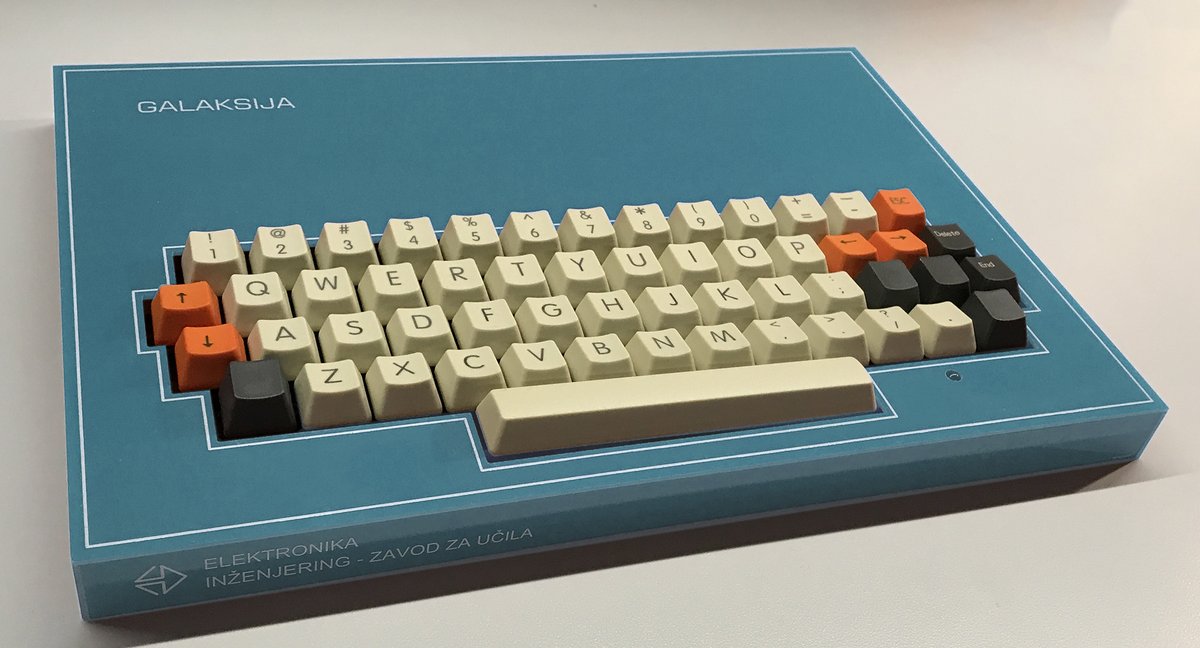In 1948, Yugoslavia was expelled from Cominform, the Soviet information agency, in retaliation for its "non-aligned" status; deprived of information-processing capacity, the country created its own IT industry from scratch.
1/
1/
Yugoslavia& #39;s high tariffs and uneasy status on the world stage meant that by the 1970s, members of the New Wave" - science and tech enthusiasts who clustered around the sf/electronic mag Galaksija - could only play with PCs by pooling their money to import western machines.
2/
2/
In the 1980s, "digital electronics enthusiast" Voja Antonić went on a Montenegro holiday with a copy of RCA& #39;s manual for a new single-chip CPU and had an inspiration for a kit-based PC that revolutionized Yugoslavian computing: the Galaksija computer!
https://jacobinmag.com/2020/08/computer-yugoslavia-galaksija-voja-antonic/
3/">https://jacobinmag.com/2020/08/c...
https://jacobinmag.com/2020/08/computer-yugoslavia-galaksija-voja-antonic/
3/">https://jacobinmag.com/2020/08/c...
Antonić& #39;s insight: you could run 64x48 block graphics on the ubiquitous Zilog Z80A chip, without a video controller. He produced a simple schematic that hobbyists could follow, and it was a hit with Yugoslavian subcultures: coders, gamers, DJs, musicians, sf fans.
4/
4/
The resulting computing revolution was grounded in (in the words of @Jacobin& #39;s @michaeleby2020) "collectivity, autodidacticism, and technophilia." An early article about the design by Dejan Ristanović for Galaksija led to an all-computing issue of the mag.
5/
5/
The normal 30,000 copy run of the mag sold out quickly and that issue was reprinted FOUR TIMES before national demand was satisfied: 120,000 copies sold, and 8,000 subsequent letters from hobbyists who& #39;d built their own computers following the diagrams it contained.
6/
6/
Antonić found a name for his computer: the Galaksija. The limits of its 4K of memory forced many idiosyncratic design choices, like its error message:
* WHAT? (syntax error)
* HOW? (input error)
* SORRY (out of memory)
7/
* WHAT? (syntax error)
* HOW? (input error)
* SORRY (out of memory)
7/
Every Galaksija looked different - hand-built by hobbyists who each had to improvise their own cases, with fantastic designs inspired by the New Wave& #39;s love of science fiction.
8/
8/
Antonić designed his system to be collaborative and open, rather than proprietary, sabotaging any attempt at DRM for code: "Free play was implicitly encouraged: the sharing, collaboration, manipulation, and proliferation of software was built into Galaksija’s very operation."
9/
9/
These programs spread widely thanks in part to a radio show that broadcast the computer code as audio, intended to be recorded to cassette (the main storage mechanism for the system). Zoran Modli& #39;s Ventilator 202 program broadcast hundreds of listener-supplied programs.
10/
10/
The listeners& #39; programs were early multimedia magazines: audio, video, concert listings, ed-tech, flight sims and other games. Other listeners would record, run, and improve these and send them back to Ventilator 202 for retransmission.
11/
11/
There was a brief time where Galaksija computers were mass produced and proliferated through Yugoslavian schools and universities but were eclipsed by cheaper imports and the death of the New Wave scene during the civil wars.
12/
12/
Today, Antonić lives just up the road from me in Pasadena, where he is fielding new inquiries from computer historians seeking to preserve the Galaksija and its story.
13/
13/
"Galaksija stands tall as a monument to a different kind of technological life, one teeming with exploration, experimentation, and communitarian spirit." -Eby
(cc @bruces)
(cc @bruces)

 Read on Twitter
Read on Twitter



